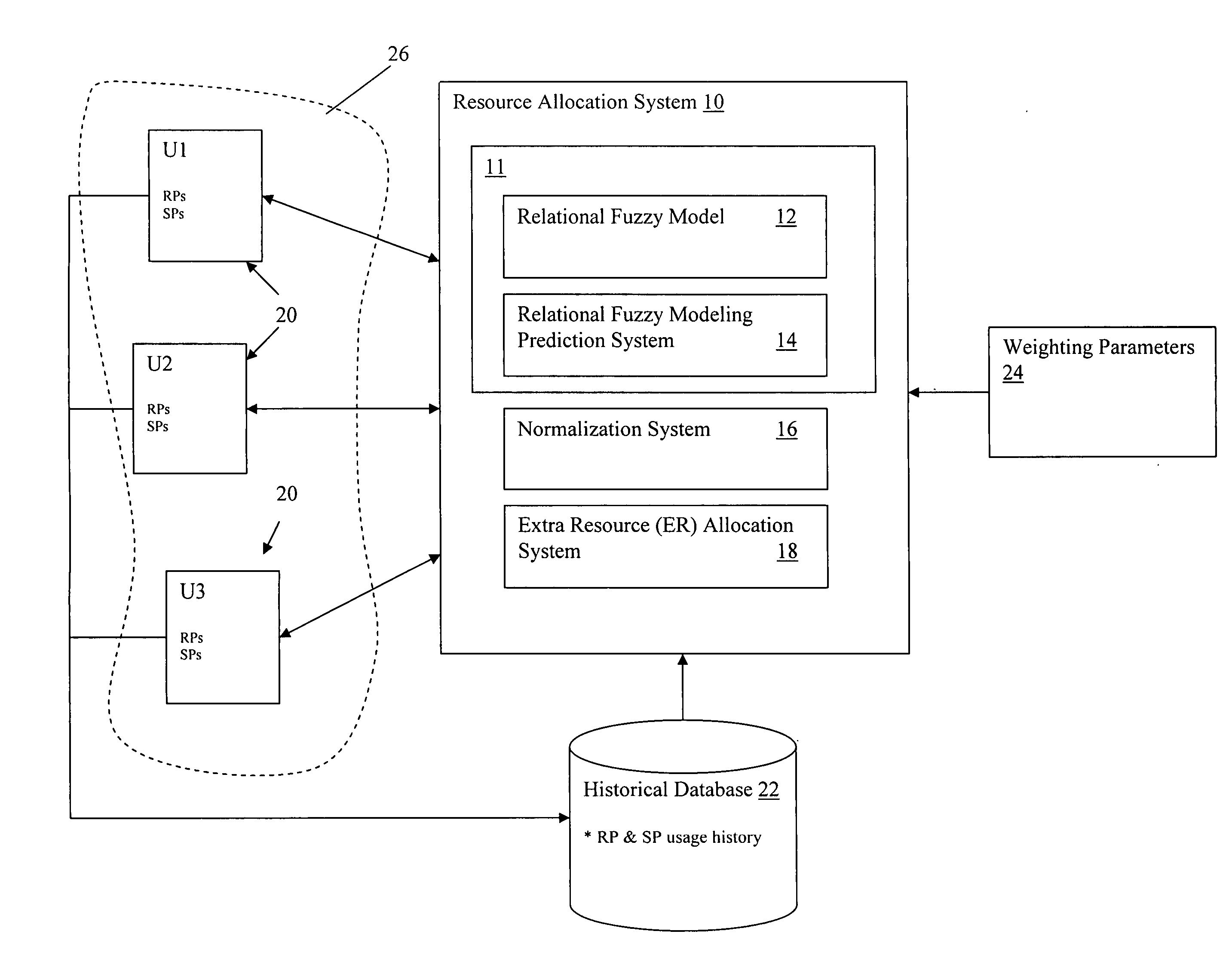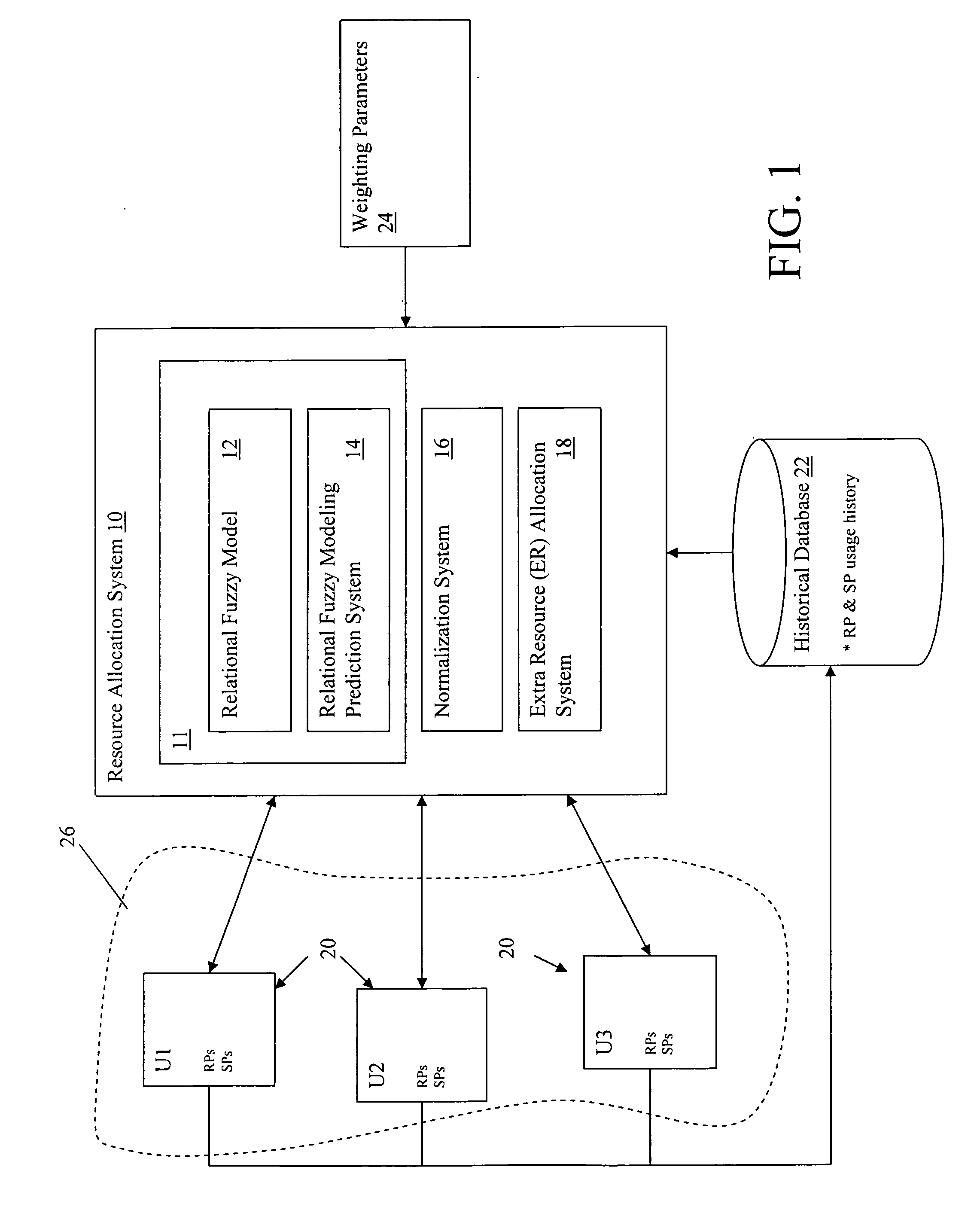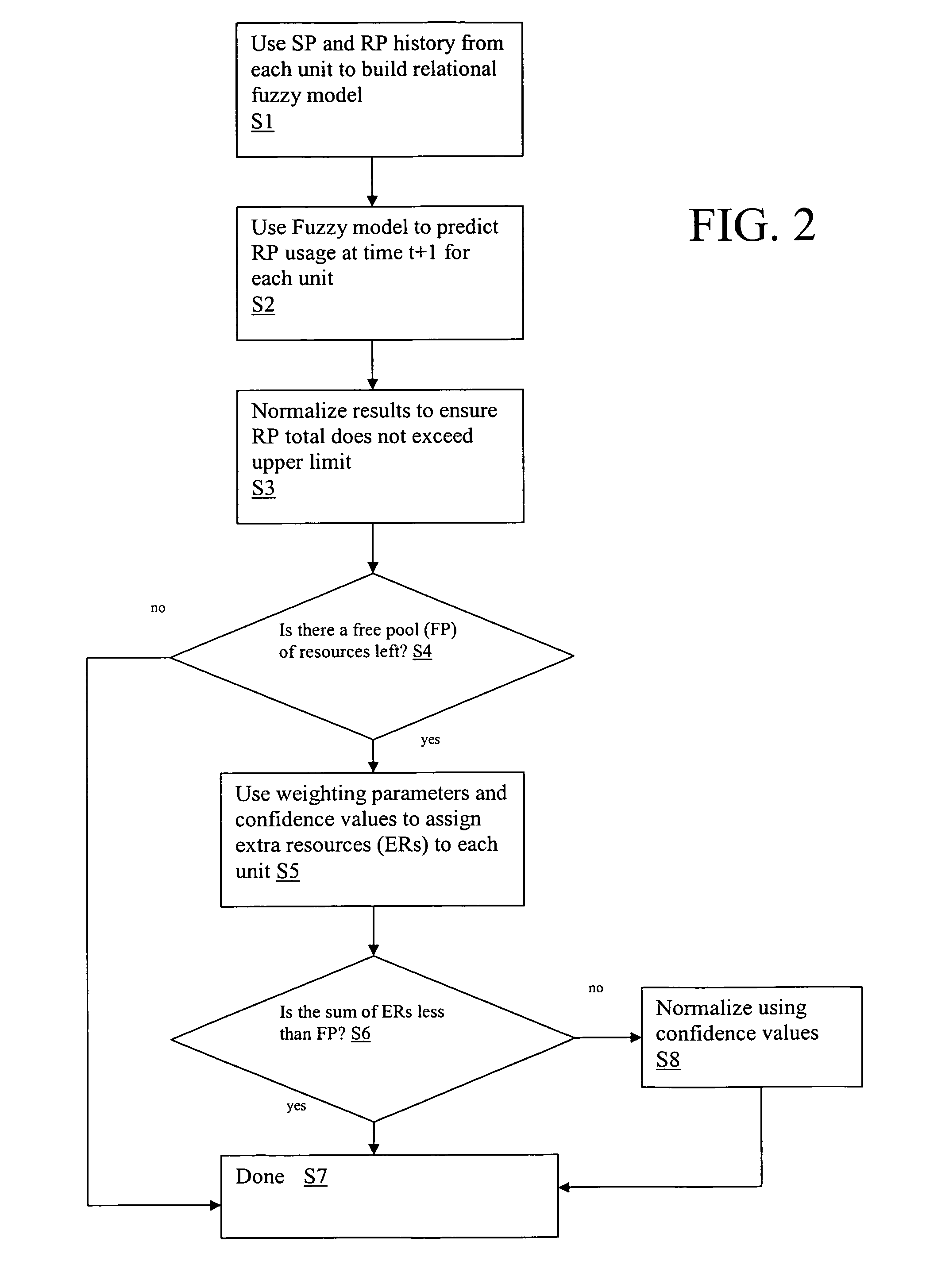Resource allocation using relational fuzzy modeling
a fuzzy modeling and resource allocation technology, applied in the field of allocation of computer resources, can solve the problems of sub-optimal resource allocation, performance variance, and each of these approaches, and achieve the effects of easy interpretation, easy validation, and not compromising flexibility in resource utilization
- Summary
- Abstract
- Description
- Claims
- Application Information
AI Technical Summary
Benefits of technology
Problems solved by technology
Method used
Image
Examples
Embodiment Construction
[0019] Referring now to drawings, FIG. 1 depicts a resource allocation system 10 that manages the allocation of resources among a set of units 20 (e.g., U1, U2, U3) contained within a distributed network 26. Units 20 may comprise any type of computing system that includes and / or utilizes resources (e.g., nodes on a grid, logical partitions, servers, personal computers, etc.) Note that for the purposes of this disclosure, the term “distributed network” is not intended to be limiting in any manner, and may range from, e.g., a set of resources scattered about a network, to a set of resources contained within a single piece of hardware.
[0020] Resources, which may include any type of computerized asset, e.g., CPU time, memory, I / O, printing, etc., are identified with an associated resource parameter (RP). Thus, the term resource and RP may be utilized interchangeably. In addition, each unit 20 may include a set of system parameters (SPs) that provides various quantified values about eac...
PUM
 Login to View More
Login to View More Abstract
Description
Claims
Application Information
 Login to View More
Login to View More - R&D
- Intellectual Property
- Life Sciences
- Materials
- Tech Scout
- Unparalleled Data Quality
- Higher Quality Content
- 60% Fewer Hallucinations
Browse by: Latest US Patents, China's latest patents, Technical Efficacy Thesaurus, Application Domain, Technology Topic, Popular Technical Reports.
© 2025 PatSnap. All rights reserved.Legal|Privacy policy|Modern Slavery Act Transparency Statement|Sitemap|About US| Contact US: help@patsnap.com



